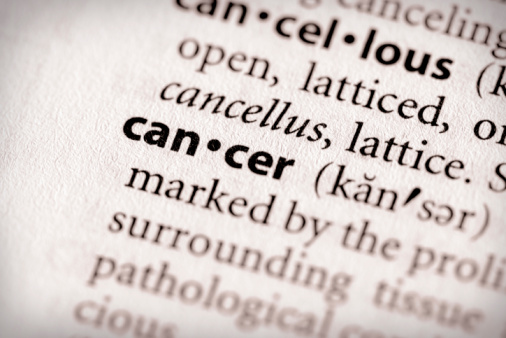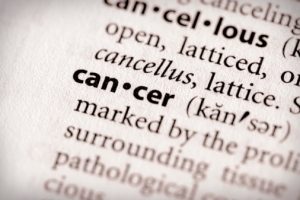
 The colon cancer vs. Crohn’s disease debate is generating a lot of interest in the medical community, and rightly so. Every year in the U.S., approximately 57,000 people die from colorectal cancer and 147,000 new cases are diagnosed.
The colon cancer vs. Crohn’s disease debate is generating a lot of interest in the medical community, and rightly so. Every year in the U.S., approximately 57,000 people die from colorectal cancer and 147,000 new cases are diagnosed.
According to the journal Oncology, there is a substantial body of evidence demonstrating that chronic inflammation is a predisposing cause of cancer. People with inflammation of the colon are at a higher risk for developing colorectal cancer than the general population.
Advertisement
Crohn’s disease is a chronic condition that causes inflammation in any part of the gastrointestinal system, including the colon. One of the big questions surrounding Crohn’s disease is – does Crohn’s disease turn into cancer? While Crohn’s can progress into cancer, there are two factors determining the likelihood of this happening. The risk of cancer increases in people who’ve had Crohn’s disease for at least eight to 10 years. And people with entire colon affected by Crohn’s are more at risk, than those whose Crohn’s disease is limited to certain areas of the gastrointestinal tract.
Colon cancer vs. Crohn’s disease: U.S. prevalence
The lifetime risk of developing colorectal cancer is about one in 23 (4.4 percent) for women and slightly higher for men – one in 21 (4.7 percent). Cancer of the colon (and rectum) is the third most common cancer diagnosed in both men and women in the United States. According to the American Cancer Society, the estimate for the number of colorectal cancer cases in the United States for 2016 is 95,270 new cases of colon cancer and 39,220 new cases of rectal cancer.
Thanks to frequent screening and the removal of colorectal polyps before they can develop into cancer, the death rate from colorectal cancer has been dropping in both men and women. Also, treatment for colorectal cancer has improved significantly over the past few years, resulting in more than a million colorectal cancer survivors in the United States.
In a study conducted from 1940 to 2011 in Olmsted County, Minnesota, the incidence for annual Crohn’s disease diagnosis was 10.7 per 100,000 people, or approximately 33,000 new cases per year. Based on this study and the current United States population, approximately 780,000 Americans currently have Crohn’s disease.
Comparing colon cancer and Crohn’s disease signs and symptoms
 The most common symptoms of cancer of the colon are:
The most common symptoms of cancer of the colon are:
- Prolonged diarrhea, constipation, or narrowing of the stool
- Dark stools or blood in the stool (often, though, the stool will look normal)
- Desire to pass stool that is not relieved by doing so
- Rectal bleeding
- Cramping or abdominal (belly) pain
- Unintended weight loss
- Weakness and fatigue
The symptoms of Crohn’s disease vary from person to person. In most cases, they develop gradually, but sometimes the symptoms appear suddenly, without warning. Crohn’s disease is characterized by an active stage and a remission stage where there are no signs or symptoms. In its active stage, the symptoms may include:
- Diarrhea
- Fever and fatigue
- Abdominal pain and cramping
- Blood in the stool
- Mouth sores
- Reduced appetite and weight loss
- Perianal disease
Difference between colon cancer and Crohn’s disease causes
While many large studies suggest that a Western diet, rich in fat and low in fiber, is the culprit, the exact cause of colon cancer is not known. However, studies show that colon cancer takes place when healthy cells develop errors in their DNA.
As with colon cancer, the exact cause of Crohn’s disease is a mystery. However, as inflammation is the main aspect of the disease, a compromised immune system could be the likely cause. Another possible cause is genetics, as Crohn’s is more common in people who have family members with the disease.
Colon cancer vs. Crohn’s disease: Risk factors and complications
 While colon cancer can affect people of any sex or age, there are certain factors that increase the risk, such as:
While colon cancer can affect people of any sex or age, there are certain factors that increase the risk, such as:
- Older age
- African-American race
- A personal history of colorectal cancer or polyps
- Inflammatory intestinal conditions
- Inherited syndromes that increase colon cancer risk
- Family history of colon cancer
- Low-fiber, high-fat diet
- A sedentary lifestyle
- Diabetes
- Obesity
- Smoking
- Alcohol
- Radiation therapy for cancer
Unlike colon cancer, the risk for Crohn’s disease is greater in the younger people, in white people (Caucasians), and people of Eastern European Jewish descent. Family history and smoking history are high risk factors as are NSAIDs (non-steroidal anti-inflammatory medications) and also close proximity to industrial and highly urban areas.
When it comes to complications, in addition to the normal cancer complications like recurrence, metastasis, and secondaries, the most important complication of colon cancer is intestinal obstruction, where the waste products (feces) are unable to move through the intestine.
Crohn’s disease, on the other hand, can lead to many complications like bowel obstruction, ulcers, fistulas, anal fissures, malnutrition associated with colon cancer, and other health problems like malnutrition associated with anemia, and even osteoporosis. Then, there is also the risk of complications arising from prolonged medication.
Diagnosis for colon cancer and Crohn’s disease
 If the signs and symptoms indicate that you could have colon cancer, your doctor may recommend one or more diagnostic tests and procedures such as colonoscopy, and blood tests, especially the CEA (carcinoembryonic antigen) levels. Once colon cancer is confirmed, the next step is to determine which stage the cancer is at, as this can help in treatment and prognosis.
If the signs and symptoms indicate that you could have colon cancer, your doctor may recommend one or more diagnostic tests and procedures such as colonoscopy, and blood tests, especially the CEA (carcinoembryonic antigen) levels. Once colon cancer is confirmed, the next step is to determine which stage the cancer is at, as this can help in treatment and prognosis.
The stages of colon cancer are as follows.
Stage I: The cancer has not spread beyond the colon wall or rectum.
Stage II: The cancer has passed through the wall of the colon, but hasn’t spread to nearby lymph nodes.
Stage III: The cancer has invaded nearby lymph nodes, but has not gone beyond.
Stage IV: The cancer has spread to other organs, like the liver or lung.
Diagnosis of Crohn’s disease involves a series of procedures, starting with a detailed physical examination to look for abdominal distension, swelling, tenderness, pain, and any abnormalities. This is usually followed by an inquiry into the medical and family history. If the physical examination and the family history point to Crohn’s disease, further tests are required to confirm the diagnosis. These most commonly include lab tests, barium meal X-rays of the upper gastrointestinal tract, CT scans, and intestinal endoscopy.
Differentiating Crohn’s disease and colon cancer treatment
Advertisement
The standard procedure for Crohn’s disease treatment involves medication and bowel rest (which involves drinking only clear liquids or having no oral intake. Nutrition is delivered intravenously through a special catheter, or tube). If these do not help, surgery is indicated to help deal with the complications of Crohn’s. It must be understood that surgery will not help stop Crohn’s disease per se.
To manage and treat colon cancer, different doctors often work together to create a patient’s overall treatment plan that usually includes surgery, chemotherapy, radiation therapy, and targeted therapy. The immediate goal is to stop the progression of the cancer into its next stage, and the ultimate goal is to kill the cancer cells. The nature of both these diseases is such that complete recovery is not always possible.
In the case of Crohn’s, it’s important to understand the disease and adjust one’s diet and lifestyle to avoid aggravating the condition. In the case of cancer, managing of the disease and keeping it under control is the key. If the cancer cannot be cured (terminal), it is important to have open and honest conversations with your doctor and your family members to express your feelings, preferences, and concerns. The most important thing is to come to terms with the diagnosis (it is easier said than done), making sure one is physically comfortable and free from pain.
